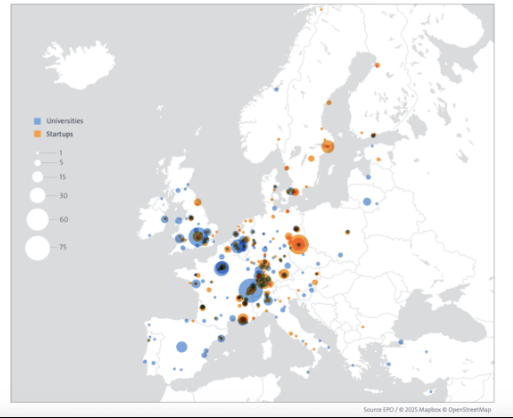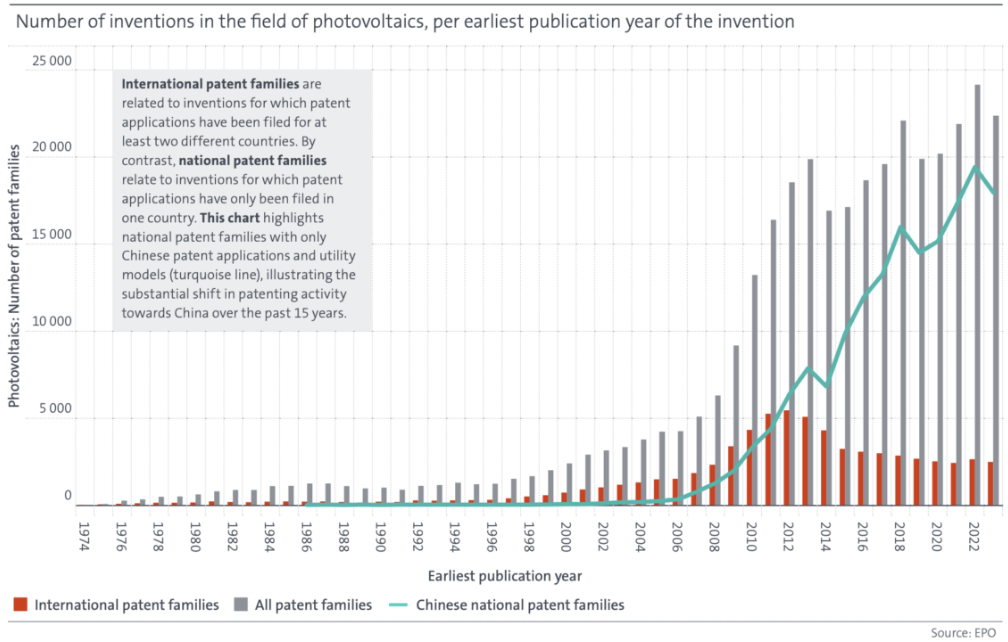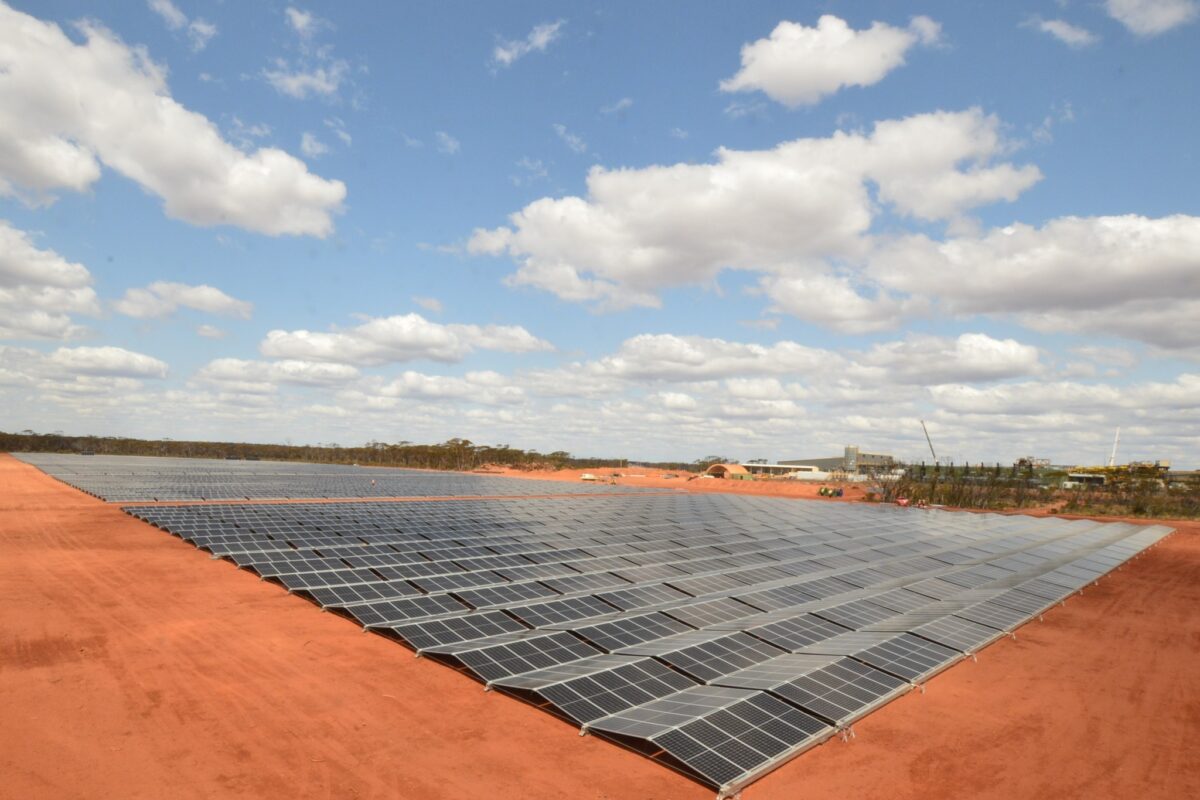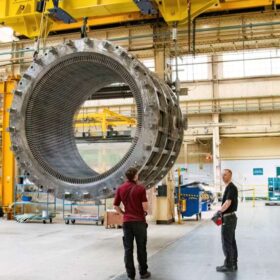The European Patent Office’s Observatory on Patents and Technology says innovation in photovoltaics (PV) has grown more than seventeen-fold over the last three decades.
The office’s technology insight report analyses trends across 30 technologies over five decades. It covers 340,000 inventions, including 70,000 international patent families (IPFs) across photovoltaic materials, photovoltaic devices, the management of these devices and application areas.
The report says that most of the top applicants related to IPFs were companies located in Japan, followed by the United States, Korea, Germany and France. Leading Chinese innovators do not feature in the list due to their primary focus on domestic patent applications.
The European Patent Office noted that while device technologies played a key role from 1990 to 2023, accounting for up to 78% of all inventions, the role of other sub-areas has steadily grown in more recent years.

Image: European Patent Office
From 2020 to 2023, around half (48%) of all PV inventions were related to device technologies, followed by applications (25%), photovoltaic materials (17%) and device management (10%).
Patenting activities have increasingly shifted to China over the past 15 years. While IPFs have declined since 2012, The European Patent Office said that patent filings in China have surged nearly sixfold since 2010, with the country accounting for 80% of all new photovoltaic inventions worldwide by 2022.
Elsewhere, Europe has maintained an edge in deployment-related technologies, including agrivoltaics and installations on rooftops, carports and buildings.
The report cites startup activity as highest in Germany, France, Switzerland and Sweden. It adds that European universities continue to demonstrate high levels of inventive activity, particularly in photovoltaic devices and materials, with the UK leading in academic patenting, followed by France, Switzerland and Germany.
In the report’s conclusion, the European Patent Office said the outlook for inventions and innovation in photovoltaics remains “promising.”
“Continued progress in photovoltaic materials and devices as well as economies of scale will ensure that photovoltaics continue to play a key role in the global transition to sustainable energy,” said the European Patent Office.
“In the coming years, we can expect to see new materials become more mature and competitive, manufacturing processes become more efficient and environmentally friendly and photovoltaics become even smarter.”
This content is protected by copyright and may not be reused. If you want to cooperate with us and would like to reuse some of our content, please contact: editors@pv-magazine.com.








By submitting this form you agree to pv magazine using your data for the purposes of publishing your comment.
Your personal data will only be disclosed or otherwise transmitted to third parties for the purposes of spam filtering or if this is necessary for technical maintenance of the website. Any other transfer to third parties will not take place unless this is justified on the basis of applicable data protection regulations or if pv magazine is legally obliged to do so.
You may revoke this consent at any time with effect for the future, in which case your personal data will be deleted immediately. Otherwise, your data will be deleted if pv magazine has processed your request or the purpose of data storage is fulfilled.
Further information on data privacy can be found in our Data Protection Policy.